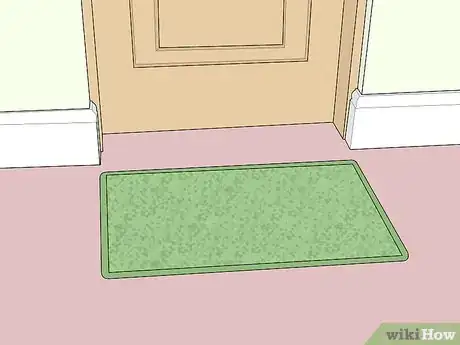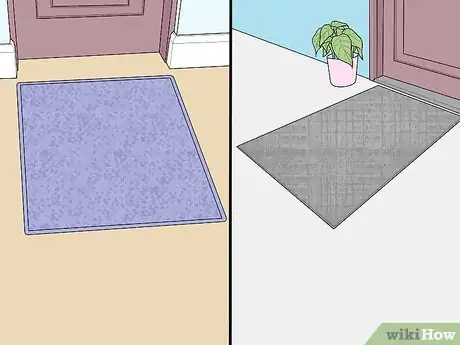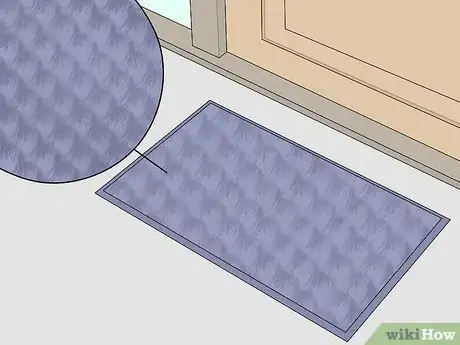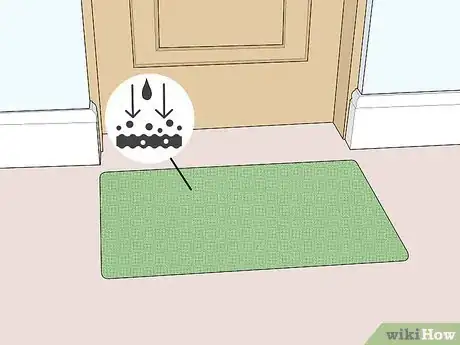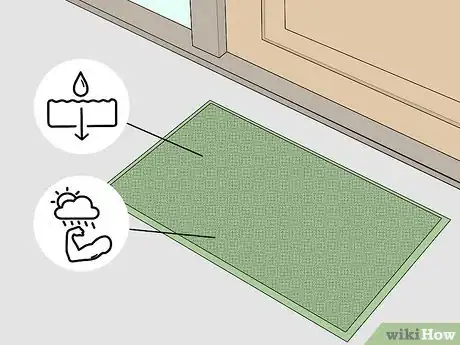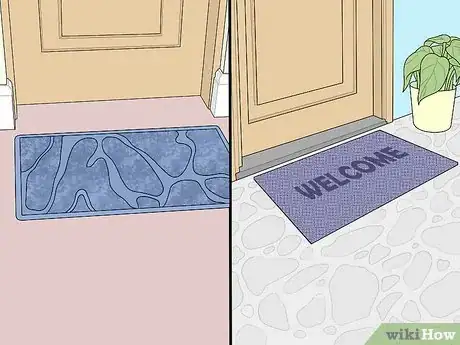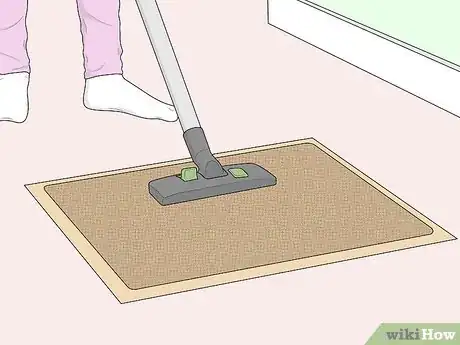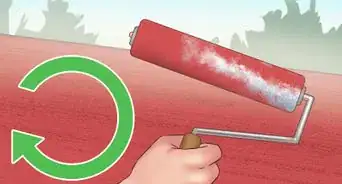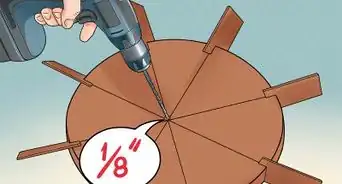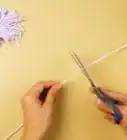wikiHow is a “wiki,” similar to Wikipedia, which means that many of our articles are co-written by multiple authors. To create this article, volunteer authors worked to edit and improve it over time.
This article has been viewed 86,749 times.
Learn more...
Debris and moisture tracked in from outdoors can damage floors, and it can mean having to sweep, vacuum, and mop much more frequently than you might otherwise need to. The lowly doormat, though often overlooked, is your first line of defense against dirt, grit and debris being tracked in, and far less costly than replacing damaged floors. It's also safer than having wet floors. Doormats don't require a large investment and they don't even require the attention of those who will use them.
Steps
-
1Mat all outside entrances, especially those with heavy traffic. Depending on your living situation, you may have doors to the back or side yards in addition to just the front. Make sure all have doormats. Also mat entrances to the main part of your house from messier or unfinished areas such as a basement, workshop or garage.
-
2Mat inside and outside. Having two mats gives you a second chance to catch whatever is on the bottom of shoes.Advertisement
-
3Try to mat at least four steps. Use longer mats inside and outside so that most people who enter will end up stepping on each mat at least once with each foot.
-
4Scrape off large debris. For outside mats, choose something that has loops, brush-like fibers, or a bit of grit in it to remove and trap large debris.
- Mount a boot scraper for entrances where you have (or expect) a lot of mud or snow, and encourage people to use it if they accumulate heavy soil on their shoes.
-
5Absorb moisture. Indoor mats often look a little more like carpet. Choose fibers that will absorb moisture.
- In wet or heavy traffic areas, make sure that moisture is also contained.
- Some mats are hybrids, providing both absorbency and scraping functions. Use these instead of a purely absorbent second stage or as the second stage of three if you have a larger entrance or garage or mud room to mat.
-
6Choose mats according to whether they will be indoors or outdoors.
- Choose outdoor mats that are designed as such, built to take weather and temperature changes.
- If outdoor mats will be in an uncovered area, choose an open style that will drain out water quickly.
- Choose indoor mats that won't damage or discolor the floor underneath and that fit with the style of the room.
- Choose colors that don't show dirt. Dark and mottled colors are good choices. Remember, if you choose good doormats, they will collect lots of dirt.
-
7Choose mats according to traffic and use. How often does an entrance get used? Does the mat need to be decorative in addition to being functional?
-
8Clean your mats periodically. [1] It is possible for doormats to get so full of dirt, debris, or moisture that they no longer clean shoes very much.
- Shake, vacuum, or sweep out loose debris. If the mat is fairly dry, this may be all you need to do. It's a good first step for wet cleaning.[2]
- Check washing instructions for indoor throw rugs. Many can be washed in a machine and line dried.
- Spray down outdoor mats with a nozzle on a garden hose.
Community Q&A
-
QuestionWhat type of floor mat should I use for on top of the carpet?
 Community AnswerTo avoid staining the carpet, use one that has a thick fabric backing. Do not use one with a rubber backing, as that might damage the carpet.
Community AnswerTo avoid staining the carpet, use one that has a thick fabric backing. Do not use one with a rubber backing, as that might damage the carpet. -
QuestionWhat indoor doormat should I use with vinyl flooring?
 Community AnswerUse a one-sided rubber mat. This will stop the mat from sliding around when you wipe your feet on it.
Community AnswerUse a one-sided rubber mat. This will stop the mat from sliding around when you wipe your feet on it. -
QuestionWhy would a mat say "outdoor use only"?
 Community AnswerBecause it could be made with plastics or rubbers containing certain chemicals that could be hazardous to be around in enclosed areas.
Community AnswerBecause it could be made with plastics or rubbers containing certain chemicals that could be hazardous to be around in enclosed areas.
Warnings
- Mats with deep, open holes can catch heels and make for an uneven walking surface.⧼thumbs_response⧽
- Make sure the door can swing freely past whatever mats you put down.⧼thumbs_response⧽
- Replace mats that won't stay flat and mats that slide. Prevent mats from slipping by placing a rubber non-slip backing material underneath if one is not built in.⧼thumbs_response⧽
- Choose door mats with good traction if they will go someplace wet or icy.⧼thumbs_response⧽
- Door mats can catch a lot of dirt and debris before it gets in, but not against debris generated indoors. Floors will still get dirty eventually. Sweep, mop, and vacuum as necessary to keep floors in top condition.⧼thumbs_response⧽
